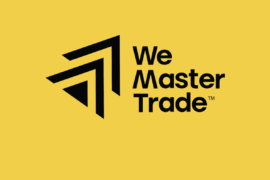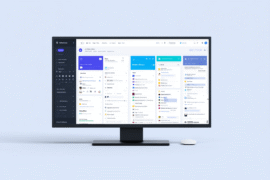This article may contain references to products or services from one or more of our advertisers or partners. We may receive compensation when you click on links to those products or services. Nonetheless, our opinions are our own.
The information presented in this article is accurate to the best of our knowledge at the time of publication. However, information is subject to change, and no guarantees are made about the continued accuracy or completeness of this content after its publication date.
When you want to add a shed to your property, whether it’s for extra storage, a workshop, or a cozy place to relax, the idea of owner financing and other financing options can be scary. You’re not the only one trying to figure out how to make your backyard dreams come true without spending a lot of money. We will look at different ways you can get money, from traditional loans to home improvement projects, as well as DIY projects that save you money. When you know your options and have good advice, you can make smart financial choices that fit your needs and budget.
- Your Shed Financing Options
- Creating a Realistic Budget for Your Shed Project
- Exploring Personal Loans and Credit Options
- A personal loan could be a good option if
- A personal loan could be a bad option if
- Leveraging Home Equity for Your Shed Investment
- A HELOC could be a good option if
- A HELOC could be a bad option if
- A home equity loan could be a good option if
- A home equity loan could be a bad option if
- Conclusion
- Frequently Asked Questions
- What are the common financing options available for building a shed?
- How does a personal loan work for shed financing, and when is it a good or bad option?
- What is a home equity loan, and how does it compare to a HELOC for shed financing?
- When should I consider using a HELOC for my shed project?
- What are the potential downsides of using a HELOC for shed financing?
- What factors should I include when creating a realistic budget for my shed project?
- Is using a credit card a good idea for financing a shed?
- When should a business owner consider getting professional help with their accounting?
- Recommended Reads
Your Shed Financing Options
When considering financing options for your shed, it’s essential to weigh the pros and cons of each loan method to find what fits your financial situation best. Here are some avenues you might explore:
- Personal Loans: These can offer flexibility with fixed rates and clear repayment schedules. Just make sure the terms align with your budget.
- Home Equity Loans: If you have equity in your home, leveraging it could provide a low-interest funding source for your shed project.
- Credit Cards: Useful for smaller purchases, but watch out for high-interest rates if you don’t pay them off quickly.
- Installment Plans: Check with the shed supplier; many offer financing options directly that allow you to pay over time without incurring high fees.
Knowing how each option affects your overall budget is crucial. To help you visualize costs, consider this simple breakdown:
| Option | Typical Interest Rate | Repayment Period |
|---|---|---|
| Personal Loan | 5% – 36% | 2-7 years |
| Home Equity Loan | 3% – 9% | 5-15 years |
| Credit Card | 12% – 30% | 1 month-ongoing |
| Installment Plan | Varies | 6 months-3 years |
Each option has its unique advantages and drawbacks. Choose the one that aligns best with your financial goals and comfort level.
Creating a Realistic Budget for Your Shed Project
When embarking on your shed project, the first step is to set a realistic budget that aligns with your goals and financial situation. Start by making an extensive list of all potential expenses involved in the project. Consider the following key components:
- Materials: Gather prices for wood, roofing, insulation, and other necessary supplies.
- Labor: Determine if you’ll be hiring help or doing it yourself; factor in costs accordingly.
- Permits: Check local regulations that could require permits, which could add to your expenses.
- Tools and Equipment: If you lack the necessary tools, include rental or purchase prices in your budget.
- Contingency Fund: Allocate a percentage (typically 10-15%) of your budget for unexpected costs that may arise.
Once you have this list, create a simple table to manage and visualize your expenses more effectively:
| Item | Estimated Cost |
|---|---|
| Materials | $500 |
| Labor | $300 |
| Permits | $100 |
| Tools Rental | $150 |
| Contingency Fund | $150 |
| Total | $1,350 |
You can keep your spending in check and get a better idea of how much you really need to spend on your shed project by breaking down each category and estimating the costs. You can change your budget as needed, but you should stick to your financial limits so you don’t get any bad surprises later.
Exploring Personal Loans and Credit Options
Personal loans can be a good option for financing your new shed because they are flexible and give you quick access to cash. You can usually borrow money without putting up any collateral, so your creditworthiness is the only thing that matters. When you look into personal loans from an FDIC member lender, pay attention to things like competitive rates, loan terms, interest rates, and repayment options. Here’s a quick list of points to consider:
- Interest Rates: Shop around for the best rates, as they can vary widely between lenders.
- Loan Amounts: Ensure that the amount you borrow covers your shed’s total cost, including additional expenses like permits or installation.
- Repayment Flexibility: Look for lenders that offer flexible repayment plans to accommodate your budget.
If personal loans don’t suit your needs, credit options like credit cards or home equity lines of credit (HELOC) might be worth considering. Credit cards can provide a quick and easy way to finance smaller purchases, but be mindful of high-interest rates. On the other hand, a HELOC, which is an installment loan type, could offer lower rates based on your home’s value, making it a viable choice for a larger project.
Here’s a comparison table for your convenience:
| Financing Option | Pros | Cons |
|---|---|---|
| Personal Loan | Fixed rates, quick access | May require good credit |
| Credit Card | Easy approval, rewards | High interest, debt risk |
| HELOC | Lower rates, flexible access | Requires collateral, fluctuating rates |
As you evaluate your options, weigh the benefits and drawbacks to find the best fit for your financial situation. Making informed decisions now can provide you with greater peace of mind in the future.
A personal loan could be a good option if
If you’re looking for a quick and solid option to fund your shed project, a personal loan could be a good idea. These loans typically offer fast funding and flexibility, allowing you to secure the funds needed without collateral. With competitive interest rates available for those with good credit, personal loans can be an effective way to manage your shed expenses while keeping your financial obligations straightforward.
A personal loan could be a bad option if
A personal loan might be a fine option, but it can become a bad choice if you overlook the fine print. High-interest rates and fees, including the origination fee, may come into play, especially if your credit score isn’t strong. Additionally, if you can’t keep up with payments, you could end up with a remaining balance that adds stress to your finances. It’s crucial to evaluate your budget and repayment capabilities before committing.
Voted "Best Overall Budgeting App" by Forbes and WSJ
Monarch Money helps you budget, track spending, set goals, and plan your financial future—all in one app.
Get 50% OFF your first year with code MONARCHVIP
Leveraging Home Equity for Your Shed Investment
If you’re considering investing in your shed, tapping into your home equity can be a strategic approach. Home equity is the difference between your home’s current market value and the outstanding balances on your mortgage. This can be a considerable financial resource, giving you the funding required for your shed without breaking the bank. With favorable interest rates, using this asset may offer you low-cost financing while enhancing your property’s overall value.
Here are some benefits of utilizing home equity for your shed investment:
- Lower Interest Rates: Home equity loans typically come with interest rates lower than personal loans or credit cards.
- Tax Benefits: Interest on a home equity loan may be tax-deductible, depending on your circumstances and local tax laws.
- Potential Increase in Home Value: Adding a shed can not only improve your property but may also increase your home’s resale value.
Consider options like a home equity line of credit (HELOC) or a home equity loan. Each has its pros and cons:
| Option | Pros | Cons |
|---|---|---|
| HELOC | Flexible withdrawals, interest only on drawn amount | Variable interest rates, potential for debt accumulation |
| Home Equity Loan | Fixed rate, predictable payments | Higher initial fees, no flexibility in withdrawal |
Whichever route you choose, remember to assess your financial situation carefully before proceeding. Investing in your shed can pay off in more ways than one; just ensure you’re making a well-informed decision that aligns with your long-term financial goals.
A HELOC could be a good option if
A Home Equity Line of Credit (HELOC) could be a good option if you’re looking for lower rates and extra cash to cover your shed expenses. With a HELOC, you can draw funds as needed, making it an excellent choice for DIYers or those with fluctuating costs. The flexibility of only paying interest on the withdrawn amount during the draw period makes it an attractive option for managing your shed investment, especially when you consider the remaining balance you may have after your projects are completed.
A HELOC could be a bad option if
On the flip side, a HELOC could be a bad option if you are concerned about your credit check or if you’re not prepared for potential fluctuations in interest rates related to your credit line. If your financial situation is uncertain, the possibility of rising payments could lead to difficulties in managing your budget. It’s essential to consider your long-term financial stability before opting for this route.
A home equity loan could be a good option if
A home equity loan could be a good option if you’re seeking competitive rates and clear loan terms for your shed financing. This type of loan provides a lump sum upfront, allowing you to cover all costs associated with your shed project immediately. If you’re comfortable with fixed payments and want predictability in your budget, a home equity loan may be a perfect fit.
A home equity loan could be a bad option if
However, a home equity loan could be a bad option if you’re unsure about your loan options or the type of loan you need. If you don’t have sufficient equity in your home’s value, you may not qualify or face higher fees. Additionally, if your financial circumstances change, the fixed loan payments could become burdensome. Assess your situation carefully before committing to ensure it aligns with your needs.
Conclusion
Financing your shed project doesn’t have to be overwhelming. With a variety of options available, from personal loans to home equity lines of credit, you can find the right fit for your budget and goals. The key is to thoroughly assess your financial situation, carefully consider each financing method, and create a realistic budget for your shed. Whether you’re opting for traditional loans, credit options, or using your home equity, make sure to weigh the pros and cons to choose the best path forward.
By planning ahead, budgeting wisely, and understanding your options, you’ll be able to transform your shed vision into a reality without compromising your financial stability. With the right approach, your new shed will not only meet your needs but also add value to your property in the long run.
Frequently Asked Questions
What are the common financing options available for building a shed?
Common financing options for a shed project include personal loans, home equity loans (or HELOCs), credit cards, and installment plans offered directly by shed suppliers. Each option has different interest rates, repayment periods, and requirements.
How does a personal loan work for shed financing, and when is it a good or bad option?
A personal loan offers a fixed rate and clear repayment schedule, often with quick access to cash and no collateral required. It’s a good option if you have good credit for competitive rates and need fast funding. However, it can be a bad option if your credit isn’t strong, leading to high interest rates and fees, or if you’re unable to keep up with payments.
What is a home equity loan, and how does it compare to a HELOC for shed financing?
A home equity loan allows you to borrow a lump sum against the equity in your home, typically with lower, fixed interest rates and predictable payments. A Home Equity Line of Credit (HELOC), on the other hand, is a revolving credit line where you can draw funds as needed, offering flexibility, and you only pay interest on the amount withdrawn.
When should I consider using a HELOC for my shed project?
A HELOC could be a good option if you’re looking for lower interest rates and need flexible access to funds, especially if your project costs might fluctuate (e.g., for DIY projects). You only pay interest on the amount you actually draw.
What are the potential downsides of using a HELOC for shed financing?
A HELOC might be a bad option if you’re sensitive to fluctuating interest rates, as they are typically variable. It also requires using your home as collateral, and if your financial situation is uncertain, the potential for rising payments could cause financial stress.
What factors should I include when creating a realistic budget for my shed project?
When budgeting for a shed, include costs for materials (wood, roofing, insulation), labor (if hiring), permits (check local regulations), tools and equipment (if needed), and importantly, a contingency fund (typically 10-15% of the total budget) for unexpected expenses.
Is using a credit card a good idea for financing a shed?
Credit cards can be useful for smaller shed-related purchases due to easy approval. However, they are generally not recommended for larger projects due to potentially high interest rates, which can quickly lead to accumulating significant debt if not paid off promptly.
When should a business owner consider getting professional help with their accounting?
While not directly about shed financing, the original text touched upon this. A business owner should consider professional accounting help if they experience increased stress, frequent mistakes in bookkeeping, complex financial situations (multiple revenue streams, rapid growth), time constraints that take away from core operations, or face tax issues like audits or penalties.

Reviewed and edited by Albert Fang.
See a typo or want to suggest an edit/revision to the content? Use the contact us form to provide feedback.
At FangWallet, we value editorial integrity and open collaboration in curating quality content for readers to enjoy. Much appreciated for the assist.
Did you like our article and find it insightful? We encourage sharing the article link with family and friends to benefit as well - better yet, sharing on social media. Thank you for the support! 🍉
Article Title: Shed Financing Strategies: How to Finance a Shed
https://fangwallet.com/2025/06/12/shed-financing-strategies-how-to-finance-a-shed/The FangWallet Promise
FangWallet is an editorially independent resource - founded on breaking down challenging financial concepts for anyone to understand since 2014. While we adhere to editorial integrity, note that this post may contain references to products from our partners.
The FangWallet promise is always to have your best interest in mind and be transparent and honest about the financial picture.
Become an Insider

Subscribe to get a free daily budget planner printable to help get your money on track!
Make passive money the right way. No spam.
Editorial Disclaimer: The editorial content on this page is not provided by any of the companies mentioned. The opinions expressed here are the author's alone.
The content of this website is for informational purposes only and does not represent investment advice, or an offer or solicitation to buy or sell any security, investment, or product. Investors are encouraged to do their own due diligence, and, if necessary, consult professional advising before making any investment decisions. Investing involves a high degree of risk, and financial losses may occur including the potential loss of principal.
Source Citation References:
+ Inspo
There are no additional citations or references to note for this article at this time.












































